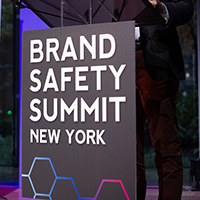
Our latest Marketers on Fire profile features Kelly Calabria, Chief Marketing and CSR Officer at Blue Cross Blue Shield of North Carolina, who examines three challenges her brand is facing in 2024 which likely ring true for many: activating the right data to build customer relationships through personalization; continued collaboration between sales and marketing (particularly on the data story flowing between the two); and solidifying business use cases for generative AI. In a recent conversation with Chief Marketer, Calabria explored these challenges and her marketing team’s approach to tackling them.
Chief Marketer: What are the top marketing challenges you’re facing in the coming year within your industry?

Kelly Calabria, Chief Marketing and CSR Officer at Blue Cross Blue Shield of North Carolina: The marketing space in general—marketing and communications and how you resonate with your audience—is evolving rapidly. The first challenge continues to be data. This isn’t new. We’ve been talking about it for a long time, but it’s continuing to accelerate. It is a question of where the data sits in your organization. How clean is the data? How much access do you have to the data? Is it the right data that you need to drive and make decisions? [What is the] “big data” within your data analytics team versus what your marketing team is driving?
We have to figure out two things. One is the need to get more personalized with your consumer to build relationships, which is so critical. The second challenge is that continued connection between sales and marketing. Our sales teams and functions are under so much pressure to drive growth and drive revenue. But as marketers, we have to be able to keep up on the data side to deliver that speed of results around revenue growth. In my organization, we’ve put a lot of focus around building relationships between the two. How are we shared partners in figuring out the data that we need to drive growth, and going at it together? We’re partners, and figuring the data stories out together. Then we both have the same goal, which is to create a great experience for our consumers and drive growth. If done right, I don’t think there needs to be tension.
The third is looking at generative AI. Obviously, everybody’s talking about it; it’s the future. Particularly in a regulated space like healthcare, you have to be thoughtful working with your technology teams. We’re starting to do this by looking at different business use cases. In a perfect world, how would we want to use it? I have pushed [this] and thrown the hand up for marketing to be one of the first in our organization to look at that use case. Because you’re seeing so much opportunity, but there’s also things to take into account. We’ve got to make sure we’re understanding how AI accounts for bias, and those type of things.
CM: Are these challenges similar for the B2B side of your business?
KC: It’s so funny to me how fast you can forget that the decision-makers in the B2B space are actually humans. Going into ’24, we’re taking a hard look at how B2B decision-makers are consuming media in different ways, getting off LinkedIn, and thinking about other channels and other mechanisms. There’s a lot of opportunity there.
Then on the B2C side, I can’t hammer this enough: It is about that emotional connection and building the relationship over time—Chris Walker’s idea of “create demand”—that helps solidify with our consumer audiences that we stand for something, and they find value in who we are as a brand and stick with us every time. To sum it up, I think for both of these audiences, it’s not so much about being laser-focused on the dollars of advertising spend. It’s more about how we’re listening and connecting. And that goes into personalization and understanding these folks as people versus just big swaths of audiences.
CM: What are some ways that your team plans to meet those challenges in the coming year?
KC: On the relationship between sales and marketing, that was something we have gone hard on. It sounds so basic, but it’s about the relationship. We have spent probably more than half of our time working to build solid relationships with the sales team. And what I mean by that is, [asking each other] what keeps you up at night. What are you trying to solve? How do you like to think through problems? How do we understand how each thinks? Because part of that, too, is moving marketing away from being “order takers” to being strategic partners, and thinking about how to solve challenges. So, before we would even get to, “here’s what we’re going to do with ‘you sales team,'” it was, how are we working together? How can we support you? This is what you’re thinking about, so how can we think about it and be your thought partner? We’ve put the relationship first, to help them see the value of what we can bring in driving growth.
Editor’s Note: Don’t miss part 2 of our conversation with Calabria, which covers how the business has evolved post-pandemic, new channels it’s pursuing to reach audiences, how regional targeting will factor into the brand’s marketing strategy, and more.





 Network
Network

